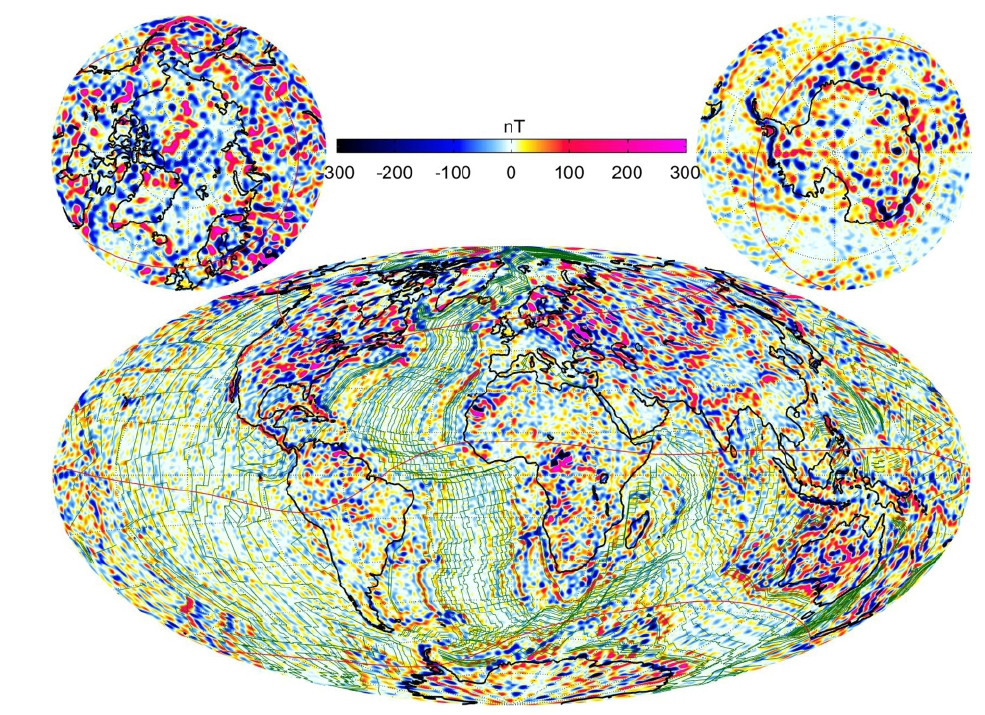Remarkably the ESA Swarm satellite constellation data has yielded evidence of a very weak but not unsurprising magnetic field generated by the movement of planetary scale oceanic currents. The signal strength is however exceedingly weak and being 20,000 times less than the lithospheric signature took four years of data to elucidate.
When salty ocean water flows through Earth’s magnetic field, an electric current is generated, and this, in turn, induces a magnetic signal. However, the field generated by tides is tiny and extremely difficult to measure – but Swarm has done just this in remarkable detail. (see the above video).
Nils Olsen, from the Technical University of Denmark, said, “We have used Swarm to measure the magnetic signals of tides from the ocean surface to the seabed, which gives us a truly global picture of how the ocean flows at all depths – and this is new.
“Since oceans absorb heat from the air, tracking how this heat is being distributed and stored, particularly at depth, is important for understanding our changing climate.
“In addition, because this tidal magnetic signal also induces a weak magnetic response deep under the seabed, these results will be used to learn more about the electrical properties of Earth’s lithosphere and upper mantle.”
Read More
| Olsen, N., D. Ravat, C. C. Finlay, and L. K. Kother LCS-1: A high-resolution global model of the lithospheric magnetic field derived from CHAMP and Swarm satellite observations, Geophys. J. Int., 211, 1461–1477, doi:10.1093/gji/ggx381 2017 |

